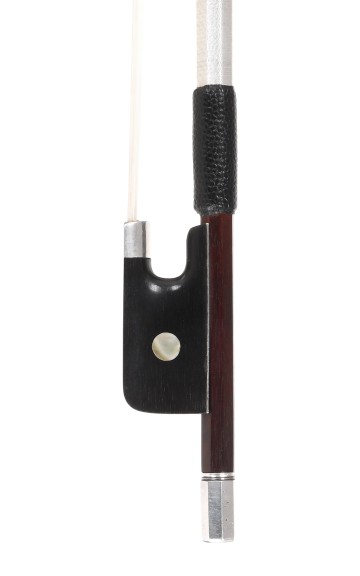François Nicolas Voirin, the master of the light violin bow: notes on his life and work
French bow maker François Nicolas Voirin (1833-1885) is considered the first great master of modern French bow making after François Xavier Tourte. As one of the most talented employees at Jean Baptiste Vuillaume's legendary workshop, his responsibility was to create particularly sophisticated models. And as an independent master, François Nicolas Voirin influenced the work of his many excellent students for years, long after his sudden death.
The first steps of F. N. Voirin in the workshop of J. B. Vuillaume
F. N. Voirin came from Mirecourt, where he was born as the son of François Voirin (1810-1862), a wood turner and gardener, and Anne Clement (1801-1862), one of J. B. Vuillaume's cousins. At 12 he began his training in his hometown; in 1855 he went to Paris and started working for J.B. Vuillaume, where he stayed for 15 years. It is assumed that the majority of — and the best of — the Vuillaume bows from this period were created by FN Voirin. Furthermore, the Vuillaume name, so illustrious in bow-making circles, is thought to have profited greatly from François Nicolas Voirin's talent. And FN Voirin in turn could not have benefited from any experience more than he did from being at the Vuillaume workshop, the atelier where the riddle of François Xavier Tourte's bows was solved and where instruments were built to meet the highest standards. The fact that Vuillaume's workshop inspired many exceptional ideas can also be seen in the complicated curiosities he created, such as bows with Stanhope lenses. In our day, the majority of specialists have agreed that these inventions should be attributed to F N Voirin.
Work and apprentices of François Nicolas Voirin
In 1870 François Nicolas Voirin founded his own workshop at Rue du Bouloi No. 3, where he worked as an independent master for 15 years. His bow models distinguished themselves from Tourte's great design by making the head more slender and elegant, shifting the arc of the stick closer to the head, and reducing the diameter at the frog. These extremely light, dynamic bows still delight ambitious musicians today who wish to pursue virtuostic style. Voirin's legacy was carried on by his students even after his sudden death in 1885; Louis Thomassin continued operating the atelier with Voirin's widow, while
Joseph Alfred Lamy père and Charles Nicolas Bazin went their own way along paths of nearly equal grandeur.
Related articles:
François Xavier Tourte, founding father of the classic violin bow
Eugène Sartory: the modern classic of bow making
The Ouchard dynasty of bow makers
Charles Nicolas Bazin: the great name of Mirecourt bow making
Louis Bazin, Bazin's grandchildren: bow making in turbulent times
Morizot, père et frères: the short history of a great family of bow makers





